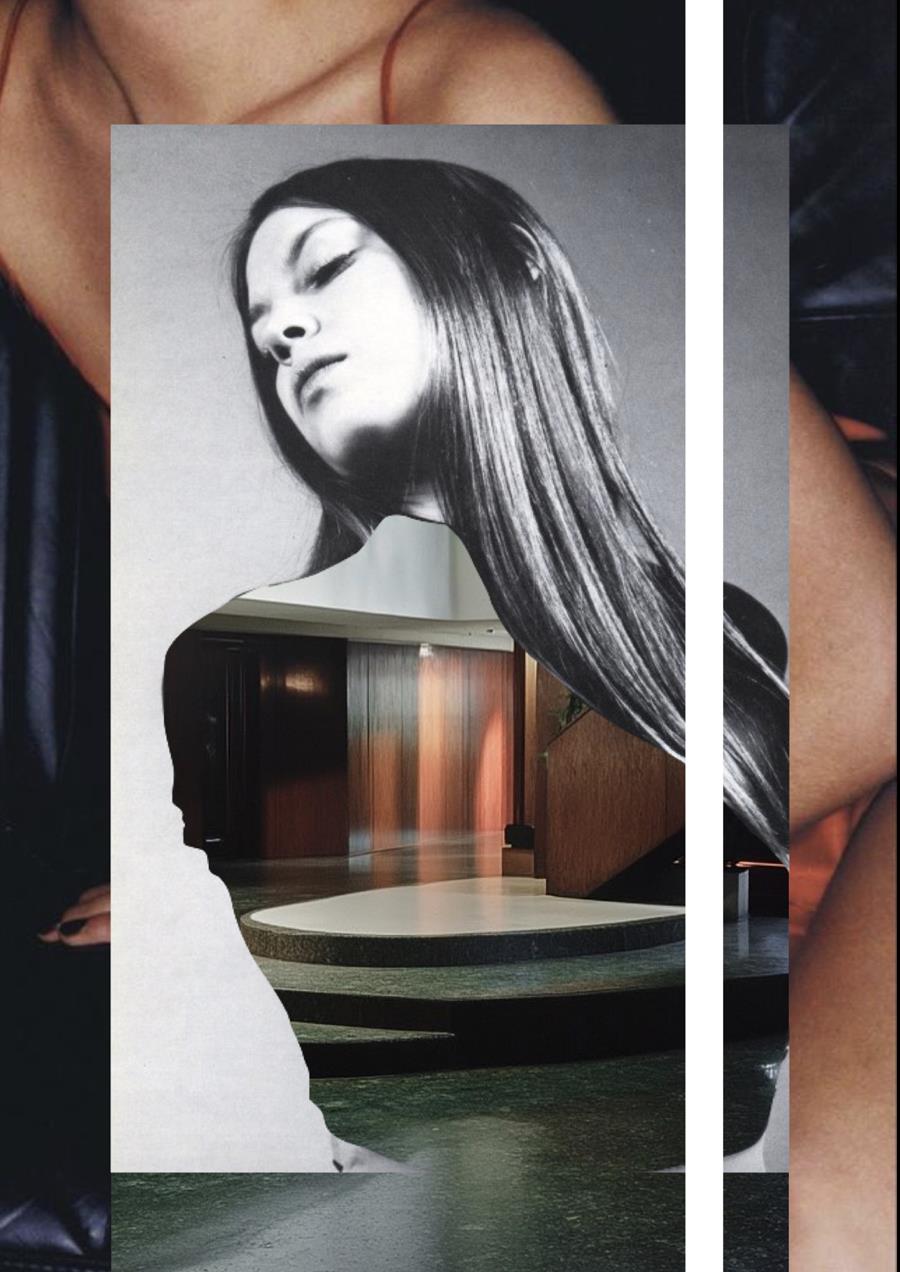
Digital collage, 5 x 8 in.
Alexandra Roberta
Alexandra Roberta brings together architecture, cinema, and memory to build collages that feel like film stills from the subconscious. Her practice moves through interiors, libraries, and hallways, spaces that carry strong emotions. Each work of hers feels suspended in a liminal state where fragments of found photographs and ads turn into new psychological architectures.
In the Words of the Artist
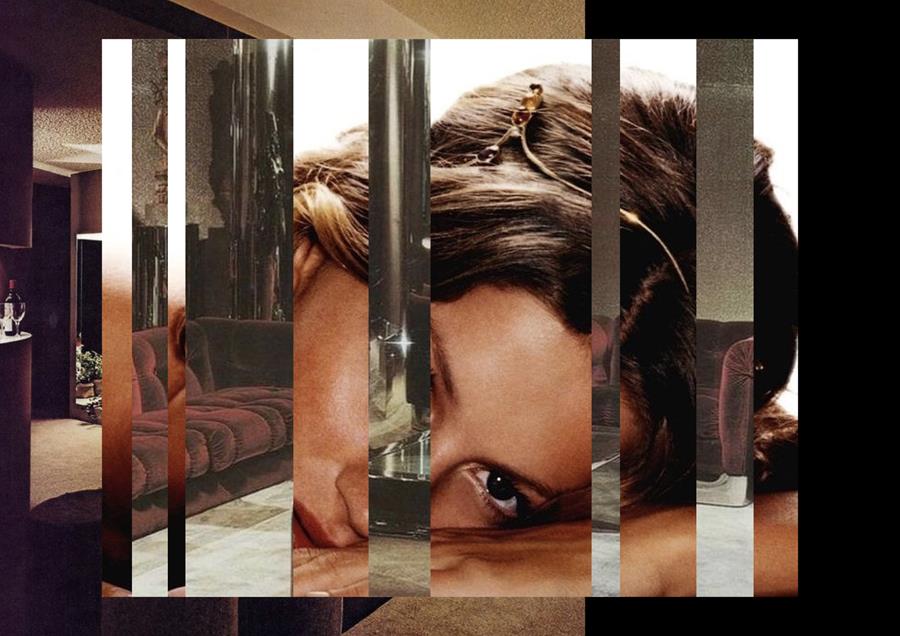
Digital collage, 5 x 8 in.
I began experimenting because collage helps me understand myself better, the places I’m in, the emotions I feel in the moment, and the stories behind the images I choose to cut. Sometimes I’ll look at an old photograph from the 1990s or 2000s and imagine an entirely new scene or story inspired by a memory or a strong feeling from my own life. I’m often influenced by film cinematography, which shapes the mood and atmosphere of my work. In many ways, collage is a form of catharsis for me, intriguing, eerie, and calm all at once, reflecting the emotional tone I bring into each piece.
Collage means everything to me. It’s a way to experiment, to observe, and to play with images. Through this process, I’ve learned to be more open-minded, playful, and detached in my everyday life, while staying creative. It’s also a way to make my own rules and shape the game as I go.

Digital collage, 8 x 11 in.

I’ve always been interested in how people become attached to certain moments from their past, episodes that leave a deep mark on who we are, how we speak, look, feel, and think. These memories seem to follow us everywhere; they live inside us. Our desires and fears often grow from those same experiences, shaping how we move through life. I often revisit the writings of Jacques Lacan and Carl Gustav Jung when thinking about these ideas.
My background in interior architecture also influences how I work. When I look at images or visit spaces, I’m drawn to the atmosphere they create, the immediate emotion they evoke. Lately, I’ve been inspired by the concept of liminal spaces: places of transition and personal change. These could be interiors or exteriors—a library, a living room, a terrace, a hallway, a hotel lobby, or a café at night.
Through both psychology and space, I explore how certain places can bring old memories, desires, or fears to the surface. We constantly associate spaces with moments from our lives, and from these connections, endless stories can unfold.
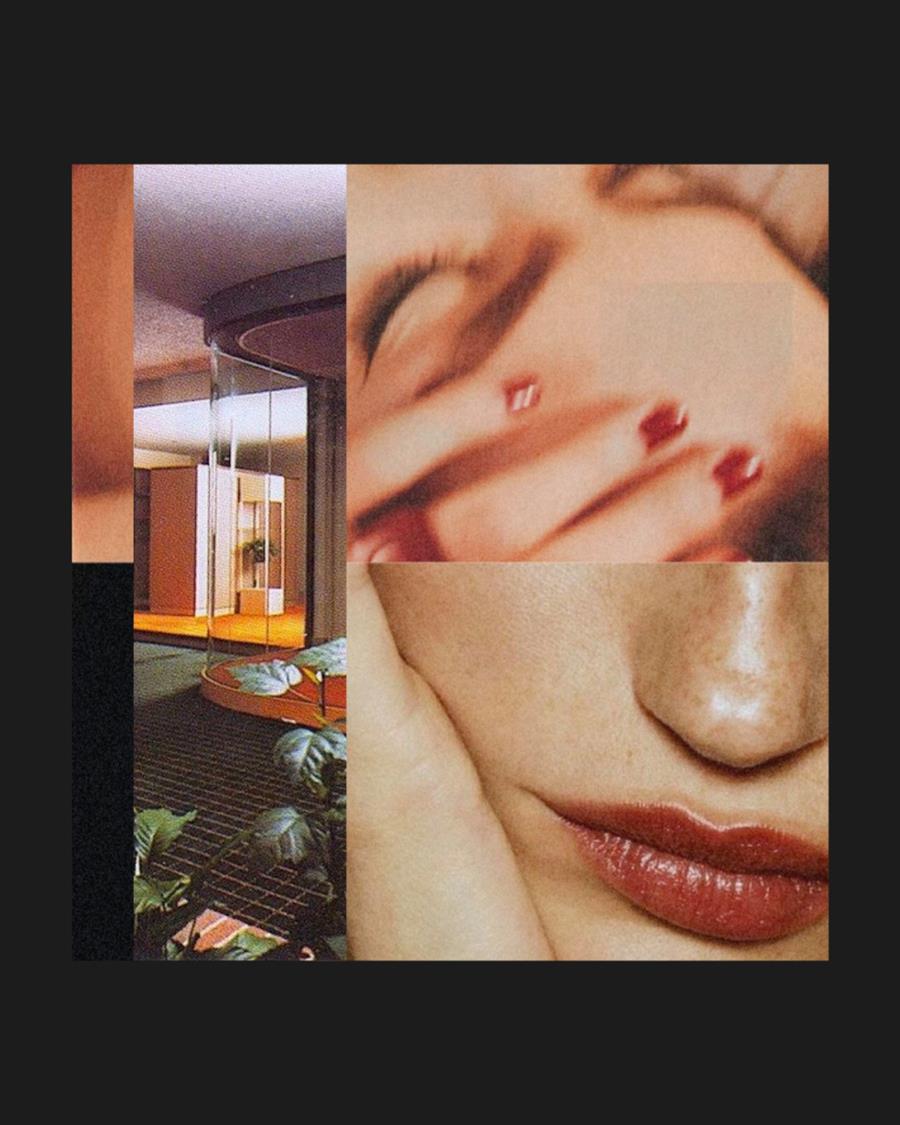
Digital collage, 7 x 8 in.
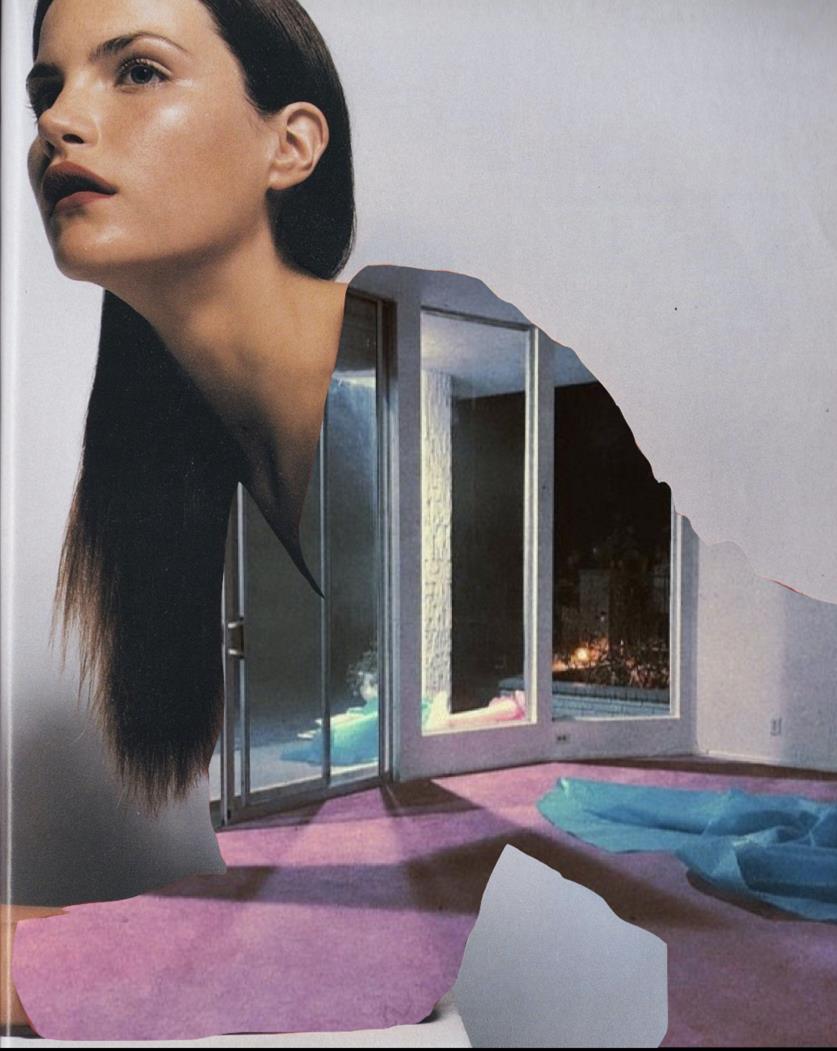
Digital collage, 8 x 11 in.
I often meditate before sketching, and ideas tend to appear right away, compositions, contrasts, images, and fragments from daily life, whether from the outside world or media like TV and social platforms. Conversations I’ve had with people sometimes reappear as visual fragments, too. From there, I start assembling everything piece by piece on paper or in my drafts. Journaling helps me organize these thoughts, and music is essential, usually disco or experimental synthwave from the 1970s and 80s, obscure and lo-fi. Being a cinephile also plays a huge role; I’m passionate about film, cinematography, and its history. Watching new movies always inspires me to explore fresh emotions and themes in my work.
I usually work with vintage photographs from the 1970s to early 2000s, fashion campaigns, ads, interior and architectural photography, from magazines, books, or online archives. The source doesn’t matter much, whether digital or physical; I enjoy experimenting with both and finding ways to combine them. Sometimes I scan materials to complete an image when I don’t have all the pieces I need—like finishing a puzzle that becomes a new story.
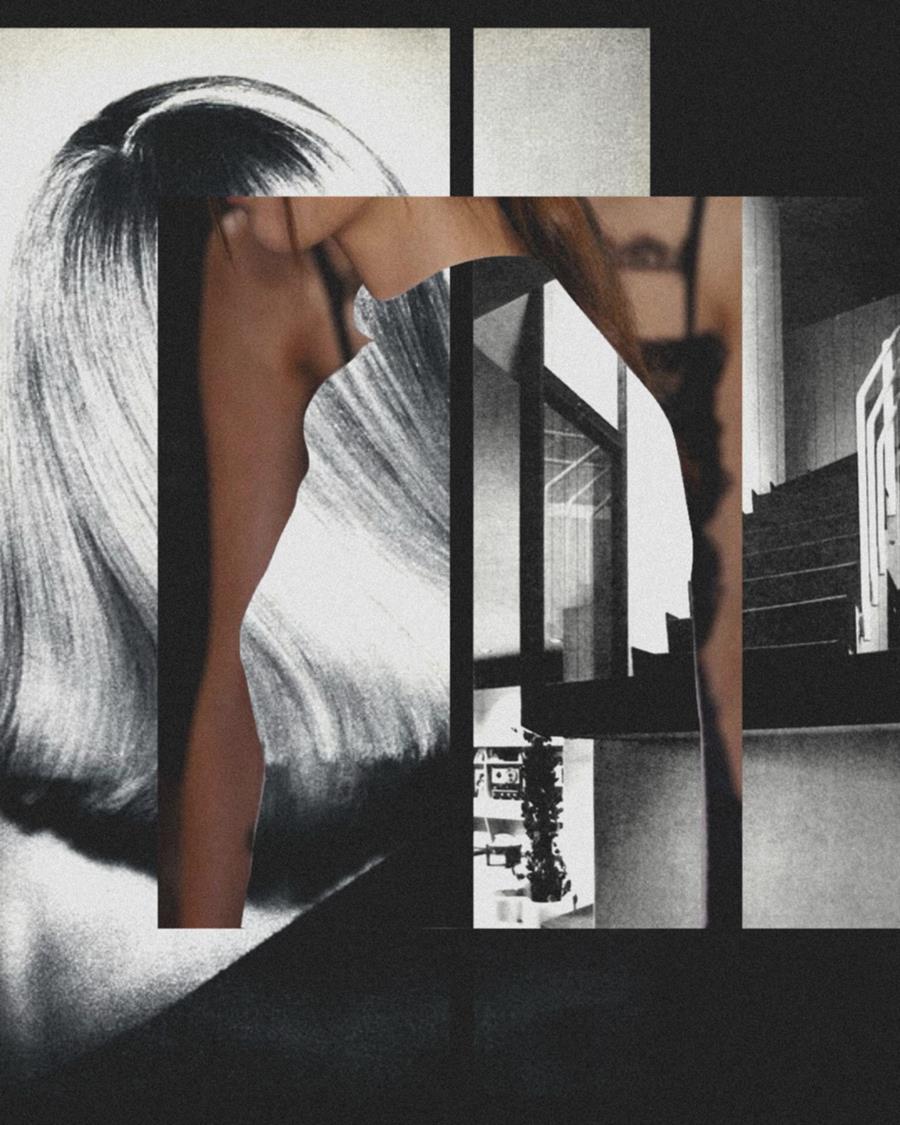
Digital collage, 8 x 11 in.
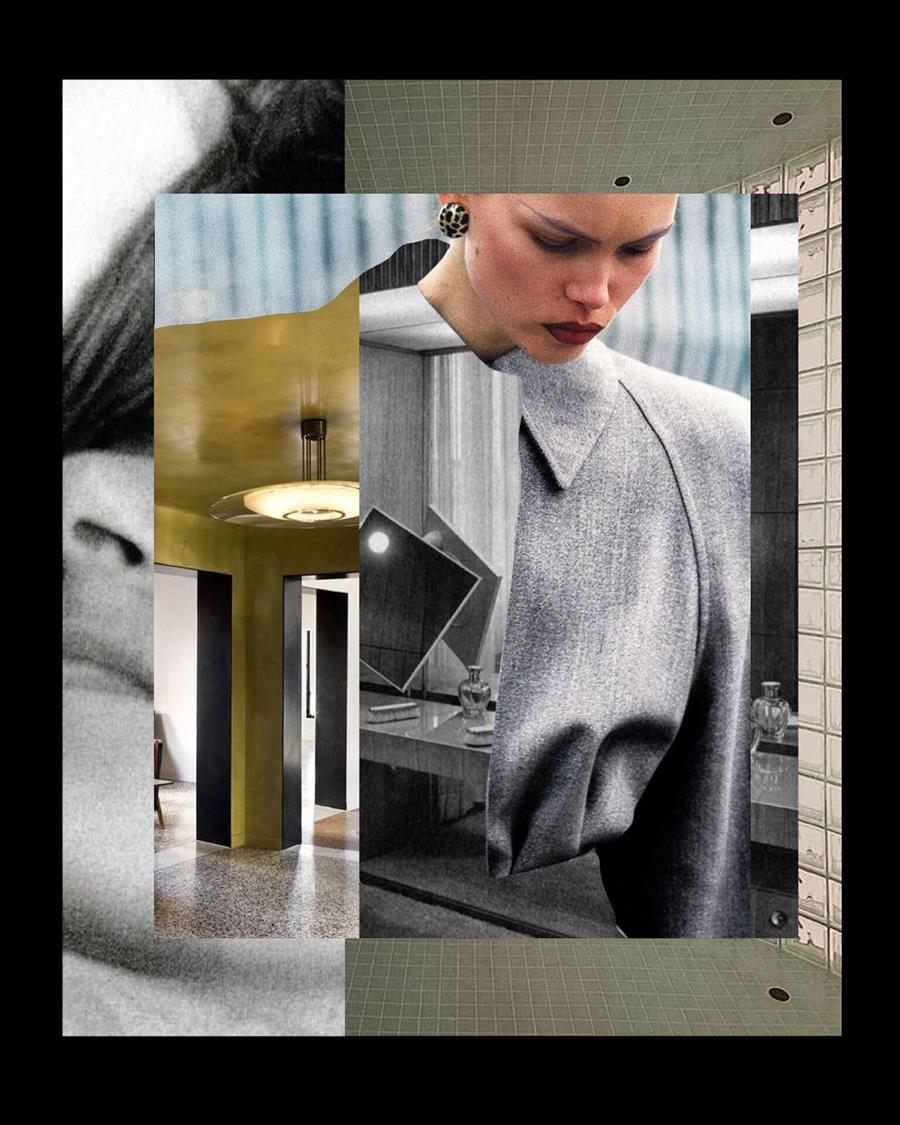
Digital collage, 8 x 11 in.

About the Artist
Trained in architecture and interior design, Alexandra Roberta first approached collage as a hobby during art school. Recently, her focus has deepened into exploring the relationship between interior spaces, nostalgia, memory, and emotion, and how liminal spaces and different types of interiors can evoke stories and feelings more powerfully than words. Combining her love of cinema and fashion, she reworks imagery from vintage campaigns, advertisements, and film stills, reviving them into something striking and imaginative. Her recent influences include filmmakers Robert Altman, Leos Carax, Nicolas Winding Refn, and Michelangelo Antonioni.
For Your Viewing Pleasure
What to watch, read, and experience, as curated by the Collé team.

MUNGO THOMSON (b. 1969, Woodland, CA) works across video, sculpture, sound, and installation to explore the gaps between everyday life and cosmic scale. His practice often reframes cultural rituals, publications, and systems of circulation to reveal their invisible structures. Thomson’s work has been exhibited internationally, including at the Hammer Museum, the Whitney Museum of American Art, and Kunsthaus Zürich. He lives and works in Los Angeles.
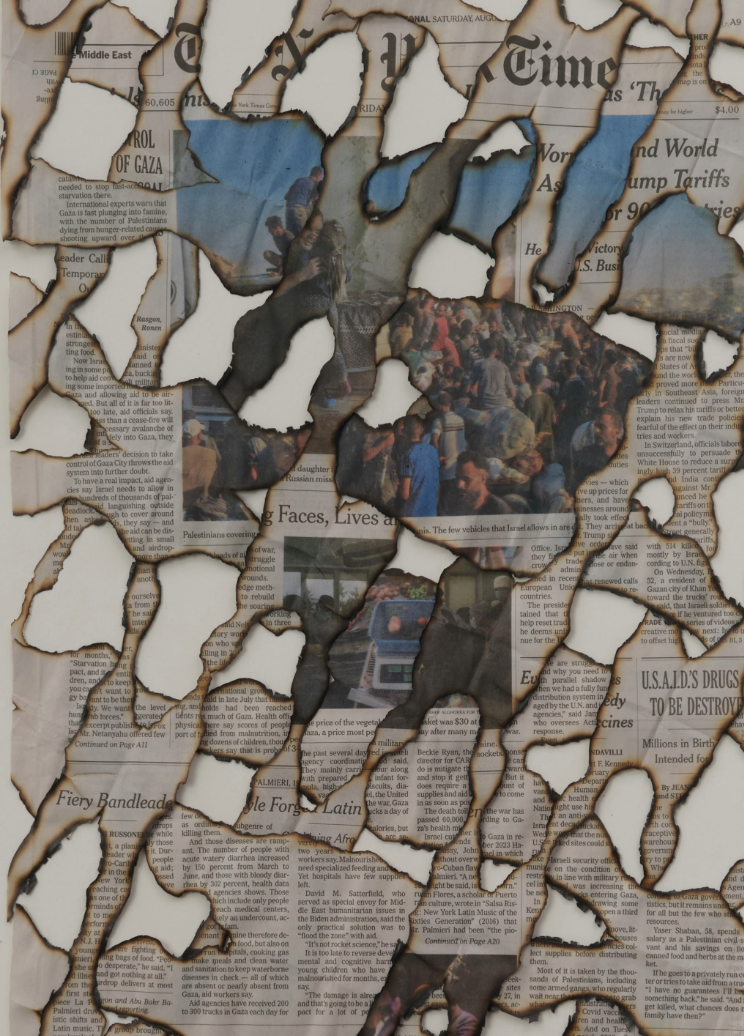
ARIEL SCHLESINGER creates sculptures and installations that merge humor, fragility, and everyday materials to explore tension, vulnerability, and chance. His work transforms ordinary objects into poetic situations that question perception and control. Schlesinger has exhibited internationally, including at Kunsthaus Zürich and the Palais de Tokyo. He lives and works in Berlin and Mexico City.

VINCENT MAGNIER works with drawing, collage, and the material language of paper to explore memory, architecture, and erasure. His restrained compositions evoke the atmosphere of forgotten places, where structure and surface merge into quiet abstraction. Rooted in the poetics of decay and repetition, his practice bridges photography, print, and the book form.
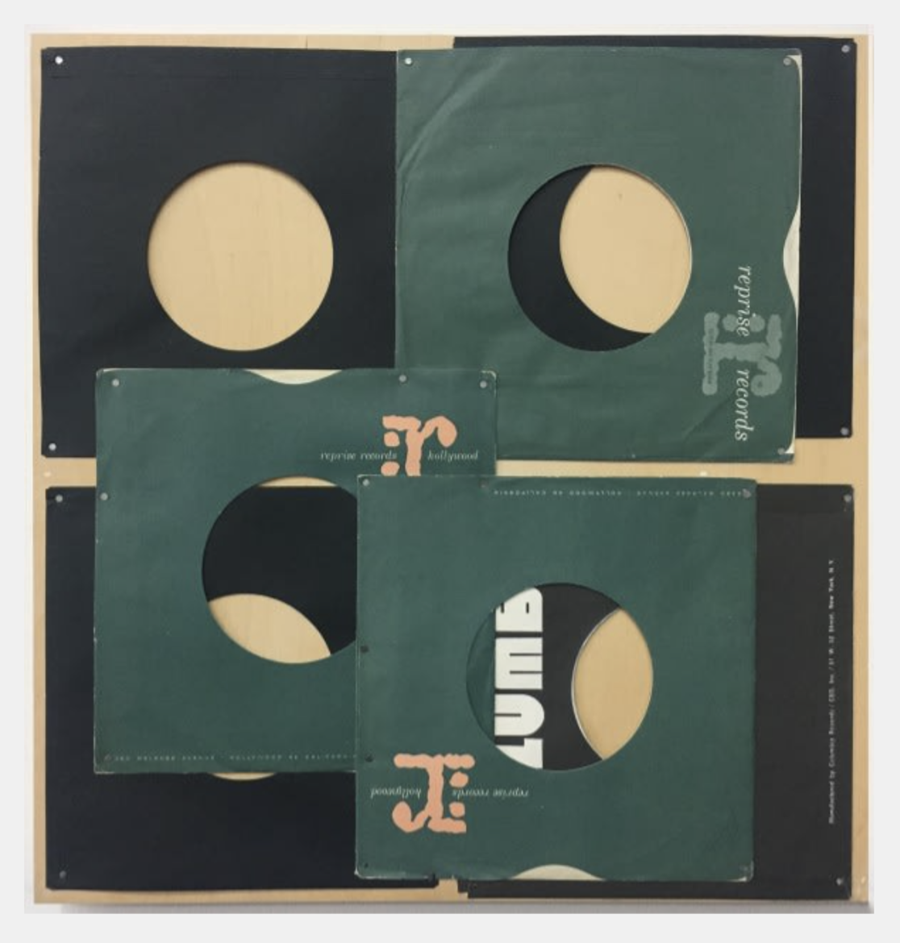
TOM BURR (b. 1963, New Haven, CT) is an American conceptual artist whose work examines the politics of space, memory, and identity. His sculptures, installations, and collages often draw from architecture and queer history to reveal the social dynamics embedded in form. Burr lives and works between New York and Connecticut.

JAE-EUN CHOI (b. 1953, Seoul) is a Korean artist whose installations and sculptures explore time, nature, and human coexistence. Trained in Ikebana and influenced by her work with Hiroshi Teshigahara, she merges organic form with conceptual rigor. Her projects often address ecological and geopolitical themes through acts of repair and reconciliation.
Out and About
What to watch, read, and experience, as curated by the Collé team.
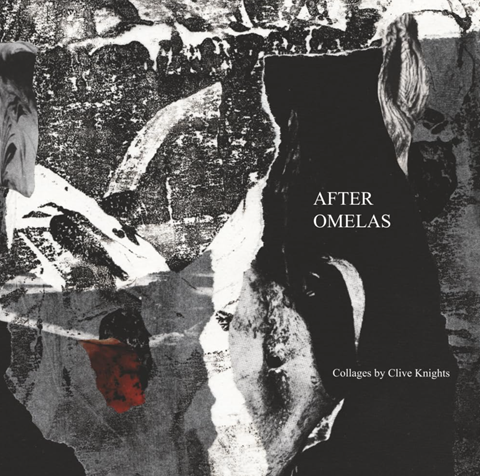
▼ READ
After Omelas: Collages by Clive Knights
In response to the profound short story by Ursula K Le Guin titled 'The Ones Who Walk Away From Omelas', Clive Knights created 61 original interpretive collages, a selection of which accompanied a new fine press, handmade limited edition of the story, recently published by No Reply Press. Available from the author.

▼ READ
Vince Aletti: Archives at Library180
Aaron Stern curated a show for Aletti at Library180 in New York. It’ll feature three large-scale table top collages of never before seen archival and ephemeral materials. Dating back from the 1960s onward, from Vince’s private collection.

▼ LISTEN
Strange Diary by Psychic Twin
This 2016 album is a glossy breakup record that turns emotional wreckage into neon catharsis. Erin Fein’s project, Psychic Twin, blends gauzy synths, pulsing drums, and vocals that sound half-human, half-hologram. Strange Diary lands somewhere between dream-pop confession and late-night electronic therapy.
